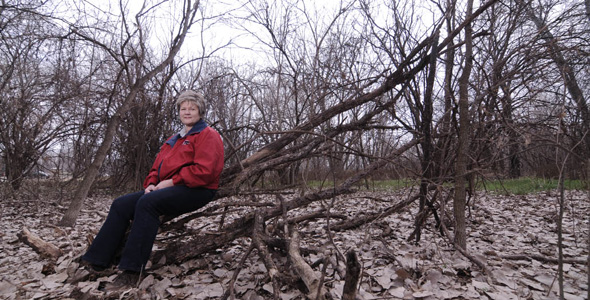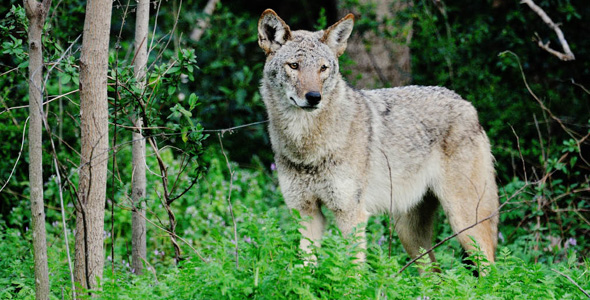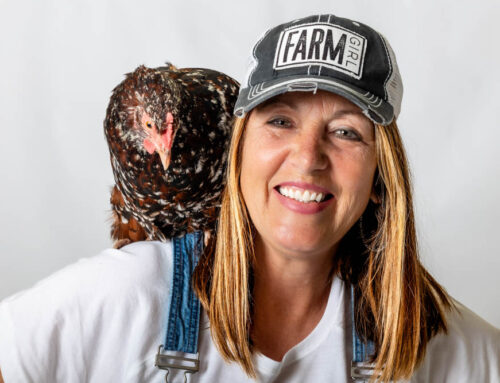Radio personality Corby Davidson, a Lake Highlands resident, recently broadcasted a story about coyotes lounging on his lawn and, allegedly, scattering the mutilated corpses of small rodents. And a neighbor of his, Karen Clardy, reports that a coyote trailed her on a morning walk. “He was no farther than 50 feet and I couldn’t scare him away,” Clardy says. Coyotes frequently are spotted hanging around our populated running/biking trails and parks, and if you’ve heard their howls, you know the racket can disturb a quiet evening with the effectiveness of a siren. Urban wildlife is simultaneously fascinating and frightening. If we are to peacefully cohabitate with the local fauna, we need to get to know them. To that end, master naturalist Bonnie Bradshaw — who founded nonprofit DFW Wildlife as well as 911 Wildlife, a company that partners with the City of Dallas to tackle wildlife dilemmas — answers our most pressing questions.
How do you expect a coyote to behave, and can they hurt us?
There is a fascinating study going on in Chicago. Today they have tagged and are tracking 360 urban coyotes. The findings in that study reflect what we see around here. Coyotes have adapted to living in residential neighborhoods. Their main food source is rodents. There are more rodents in developed neighborhoods. Therefore, coyotes will live longer, produce more offspring and those offspring will live longer in residential areas. They are not a threat to people. They occasionally will take a cat or small dog, but their danger to pets is greatly exaggerated. Cats make up less than 1 percent of the coyote diet. Cats are far more likely to be killed by a car. They could also become prey to a great horned owl or a bobcat.
I went years never seeing a coyote in the neighborhood, but in recent years I have encountered several. Are there more now?
A couple of things go on that you might notice. For one, they react to the seasons. Like us, they don’t want to be out during Texas summers, so you won’t see them much then. In the fall, winter and spring, they could be out any time of day. The coyote is extremely intelligent and has learned that humans in the city are no threat. In a rural area, someone will shoot them if they show themselves. Here, people will just pull out their cameras and shoot photos.
You say they are smart — just how wily are these coyotes?
I would say they are smarter than your typical domestic dog. They have learned traffic patterns and patterns of homeowners and house pets. They find the properties with overflowing birdfeeders and fruit trees. Some people don’t know that a significant part of their diet is fruit. They thrive on a wide variety of food they find in the neighborhood.
One evening at White Rock Lake I heard what sounded like a big pack of coyotes howling. It freaked me out. But I’ve never seen them in packs. What is up with that?
The Latin name for coyote is canis iatrans, which means singing dog. The coyote has 12 different vocalizations, some of them torturous to our ears, but to them it is a mating call. Two coyotes can sound like a dozen or more. Coyote mating season starts sometime around mid-February. Valentine’s Day. That sound you heard was probably coyote love.
When a coyote becomes a nuisance or a safety hazard to tiny pets, how do we get make them go away?
Over the past 250 years, man has tried various means — hunting, trapping, killing, moving — to rid urban areas of wolves and coyotes, but for coyotes it has had the opposite effect. The more we do to try to eliminate them or force them into hiding, the more they breed. The best way to eliminate them is to eliminate food. Don’t leave pet food outside. Don’t leave overflowing bird feeders. Eradicate any den sites. Often they will build a den under a shack or a porch. And finally, we can use aversion conditioning. When one is following you, or sitting on your lawn, yell at it. Throw something at it. Teach it to flee from humans. If someone has fed them, they will follow people, hoping to be fed.
OK, some non-coyote wildlife questions: I hear scampering in my attic. What is it?
Squirrels, if it is scampering. If it sounds like a person running around up there, it is a raccoon. They are large and clumsy.
Last summer, my chimney was chirping and squawking. It went away after a few weeks. What was in there?
Oh! Those were chimney swifts. They are very loud but very tiny. They are one of four birds totally dependent on human structures. Their little feet are incapable of perching, so they do everything in flight. They construct nests from tiny twigs. They will leave for winter. I suggest putting an old blanket in the damper to quiet the noise next year!
What other animals cause alarm?
Most common calls we get are about coyotes, bobcats and possums. Especially possums. People are terrified that they are carrying rabies. But possums don’t carry rabies. In fact they are nice to have around. They are like a little neighborhood sanitation crew. They eat road kill [and other nasty stuff]. They eat roaches and other things we don’t necessarily want to see.
What about armadillos?
A lot of people call and say a possum is digging up their yard. I tell them the possum was framed. The armadillo did it.
Snakes?
The most common snake is a rat snake. It’s 99 percent of what we see in this area. And they can be as big as six feet long, which can be pretty intimidating. But they are not aggressive toward people. Again, keeping the snakes away is a matter of keeping the food sources away. Snakes eat rodents. Rodents eat trash, pet food and birdseed.
Interview has been edited for brevity.
If you have a wildlife issue, contact 911 Wildlife through 911wildlife.com or at 214.368.5911.
Read about raccoons and the distemper epidemic in Dallas.







